Having a Windows 11 installation media at your disposal is essential for installing or reinstalling the operating system on your PC. It can also be extremely helpful if you're assisting others with setting up their computers. This guide will walk you through several methods to create a bootable Windows 11 installation media, complete with detailed instructions and images to guide you through the process.
Method 1: Create a bootable media using the Media Creation Tool
Creating a bootable USB drive using the Media Creation Tool is one of the simplest and most convenient ways to get a Windows 11 installation media. This method doesn't require you to have a Windows 11 ISO file beforehand. Step 1: Visit the official Windows 11 Download page using your favorite web browser. Scroll down to the 'Create Windows 11 Installation Media' section and click on the 'Download Now' button to download the Media Creation Tool.
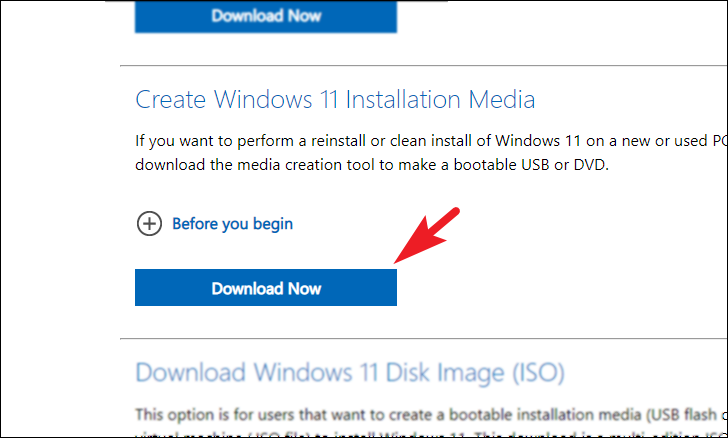
Step 2: Once the download is complete, navigate to your default download location and double-click the MediaCreationTool.exe file to launch it.

Step 3: If prompted by the User Account Control (UAC), click 'Yes' to allow the tool to make changes to your device. If you're not logged in as an administrator, you may need to enter administrator credentials.
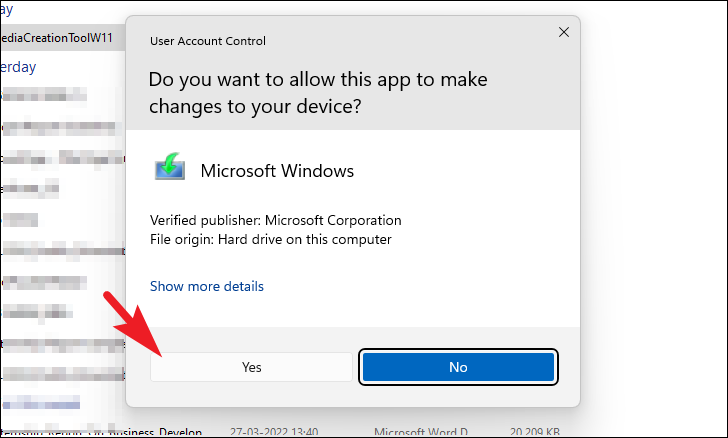
Step 4: On the 'Windows 11 Setup' window, read the license terms if you wish, then click on the 'Accept' button to proceed.
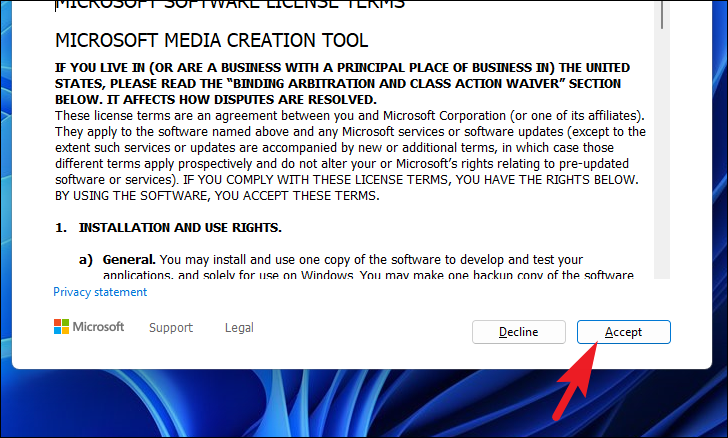
Step 5: The tool will automatically select the language and edition that best match your current PC. If you want to use the recommended options, simply click 'Next'. If you need to change the language or edition, uncheck the 'Use the recommended options for this PC' box and select your desired options from the drop-down menus before clicking 'Next'.
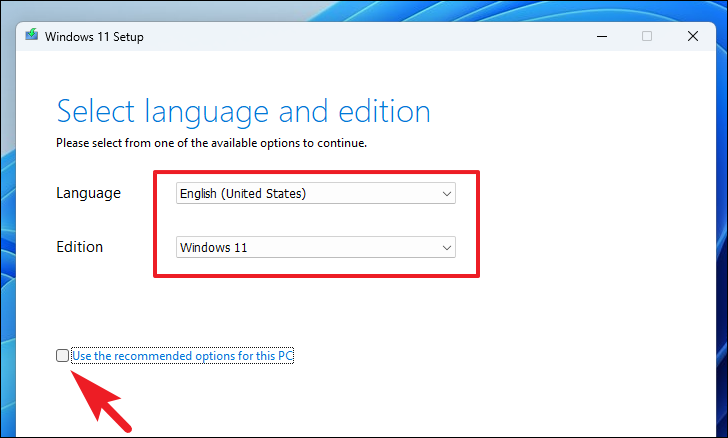
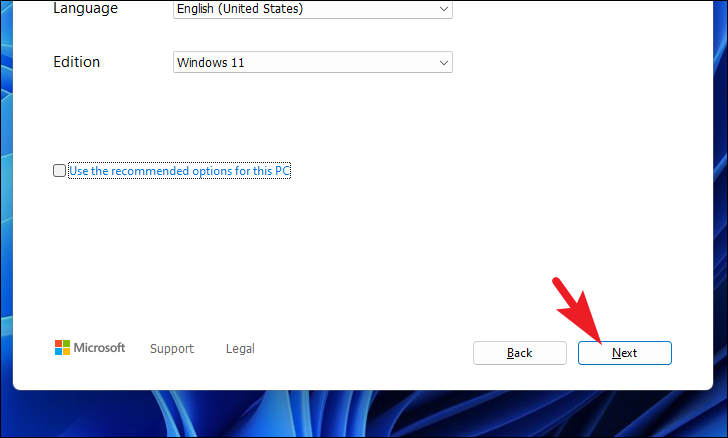
Step 6: Choose the type of media you want to use. Select 'USB flash drive' to create a bootable USB drive, or 'ISO file' to download an ISO that you can burn to a DVD later. Click 'Next' to continue.

Note: If you're creating a bootable USB drive, you'll need a USB flash drive with at least 8 GB of space.
Step 7: If you chose 'USB flash drive' in the previous step, select your USB drive from the list of available drives. If your USB drive isn't listed, make sure it's connected properly and click 'Refresh drive list'. Once selected, click 'Next'.
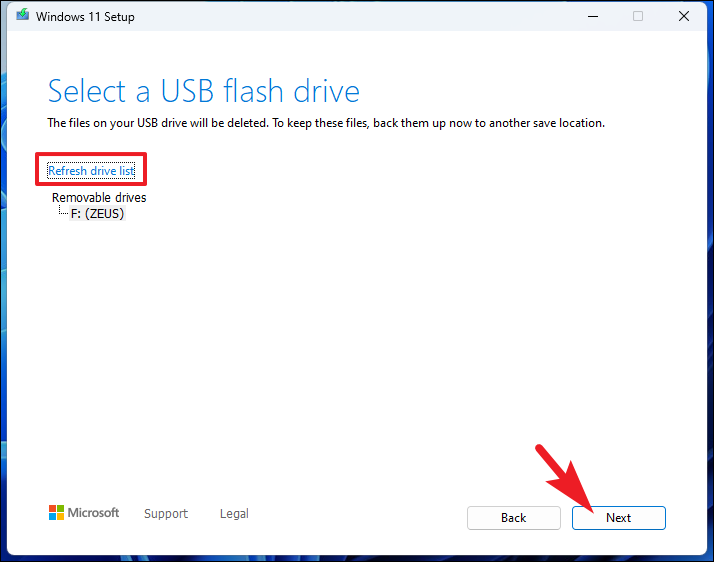
Step 8: If you selected 'ISO file', you'll be prompted to choose a download location. Browse to your desired folder, enter a file name if you wish, and click 'Save' to start downloading the ISO file.

Step 9: The tool will now begin downloading Windows 11. This may take some time depending on your internet connection. Wait for the process to complete.
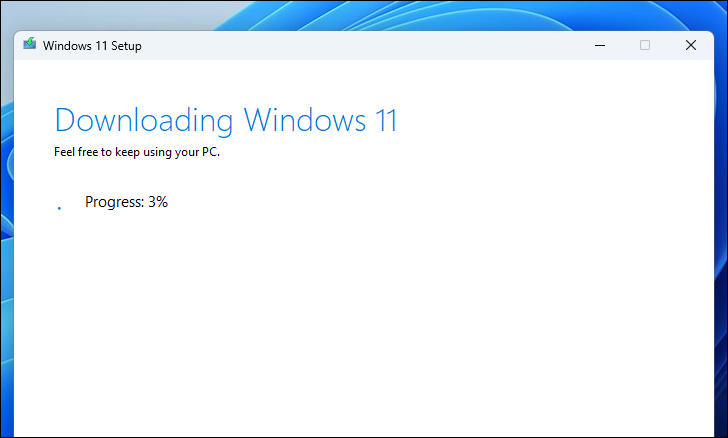
Step 10: Once the process is finished, you'll see a confirmation message. If you created a bootable USB drive, it's now ready to use. If you downloaded an ISO file, you can now burn it to a DVD using your preferred software or create a bootable USB drive using the ISO file.
Method 2: Use a third-party software to create a bootable USB
Another effective method to create a Windows 11 installation media is by using third-party software like Rufus. Rufus is a lightweight and portable application that allows you to create a bootable USB drive using a Windows 11 ISO file.
Note: You'll need a Windows 11 ISO file and a USB flash drive with at least 8 GB of space for this method.
Step 1: Download the Windows 11 ISO file from the official Microsoft website if you haven't already. Step 2: Visit the Rufus website at rufus.ie. Scroll down to the 'Download' section and click on the latest version of Rufus to download the executable file.
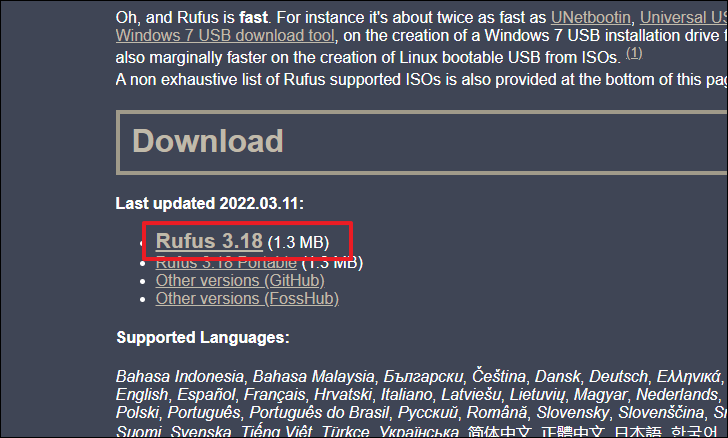
Step 3: Locate the downloaded Rufus.exe file and double-click it to run the program. Since Rufus is portable, it doesn't require installation.

Step 4: If prompted by the User Account Control (UAC), click 'Yes' to allow Rufus to run.

Note: Insert your USB flash drive into your computer if you haven't already.
Step 5: In the Rufus window, select your USB drive from the 'Device' drop-down menu. Step 6: Click the 'Select' button next to 'Boot selection' and browse to the location of the Windows 11 ISO file on your computer. Select the ISO file and click 'Open'.

Step 7: Under 'Image option', ensure 'Standard Windows installation' is selected.
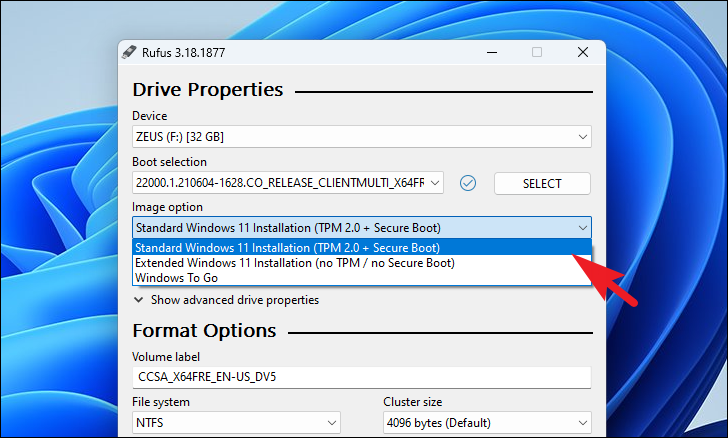
Step 8: Determine the partition scheme and target system type for your PC. To find out your BIOS mode, press Windows+R, type msinfo32, and press Enter. Look for the 'BIOS Mode' field; it will display 'UEFI' or 'Legacy'.
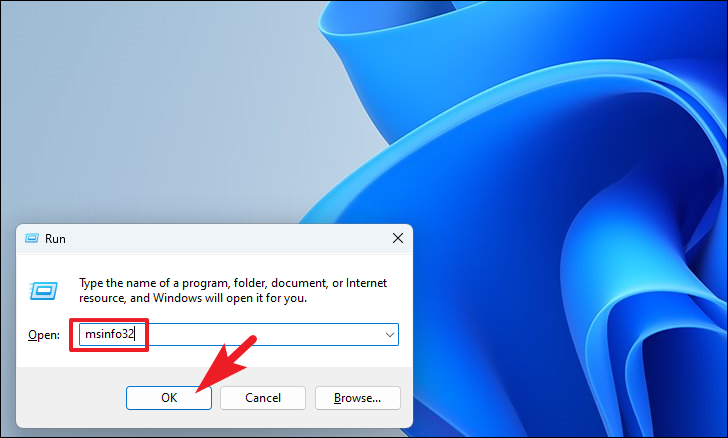
Step 9: In Rufus, select 'GPT' for UEFI systems or 'MBR' for legacy BIOS systems from the 'Partition scheme' drop-down menu.

Step 10: Rufus will automatically populate the volume label. You can leave it as is or enter a preferred name in the 'Volume label' field.

Step 11: Choose the file system. If you selected 'GPT' as the partition scheme, you can choose 'FAT32' or 'NTFS' from the 'File system' drop-down menu. If you chose 'MBR', only 'NTFS' will be available.

Step 12: Once all settings are configured, click the 'Start' button at the bottom to begin creating the bootable USB drive. A warning will appear that all data on the USB drive will be destroyed.
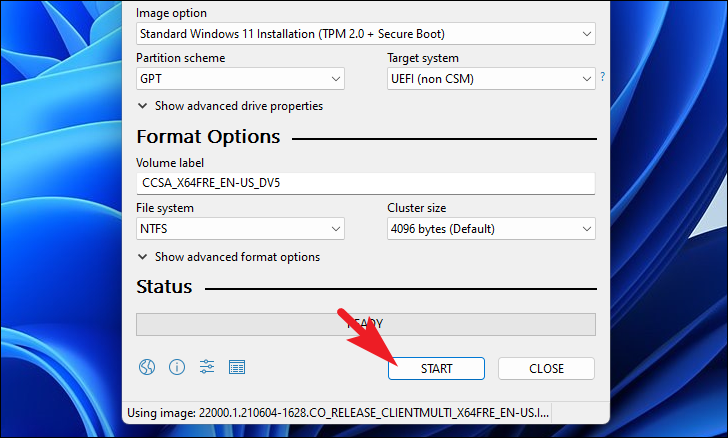
Step 13: Click 'OK' to confirm and start the process. Wait for Rufus to finish creating the bootable USB drive. This may take several minutes.
Method 3: Use Command Prompt to create an installation media
If you prefer using command-line tools, you can create a bootable Windows 11 installation media using Command Prompt. This method doesn't require any additional software, but it involves typing commands carefully.
Note: Before proceeding, make sure your USB flash drive is connected to your computer.
Step 1: Open the Start menu, type 'Command Prompt', right-click on 'Command Prompt' in the search results, and select 'Run as administrator'.

Step 2: In the Command Prompt window, type DISKPART and press Enter to start the DiskPart utility.
DISKPART
Step 3: Type LIST DISK and press Enter to display all available storage devices.
LIST DISK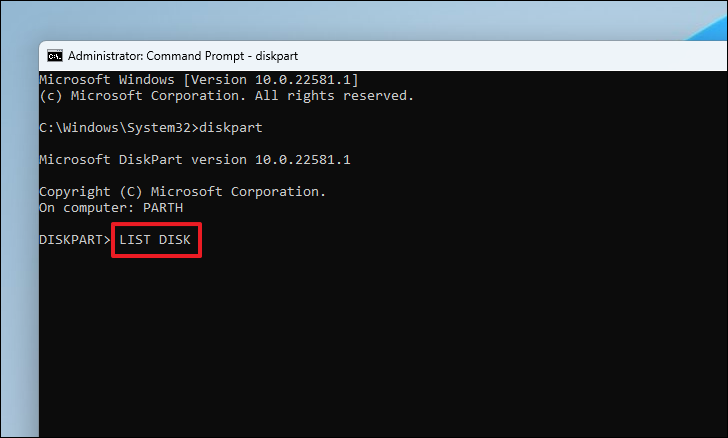
Step 4: Identify your USB flash drive from the list by looking at the disk sizes. Be cautious to select the correct disk to avoid data loss on other drives.
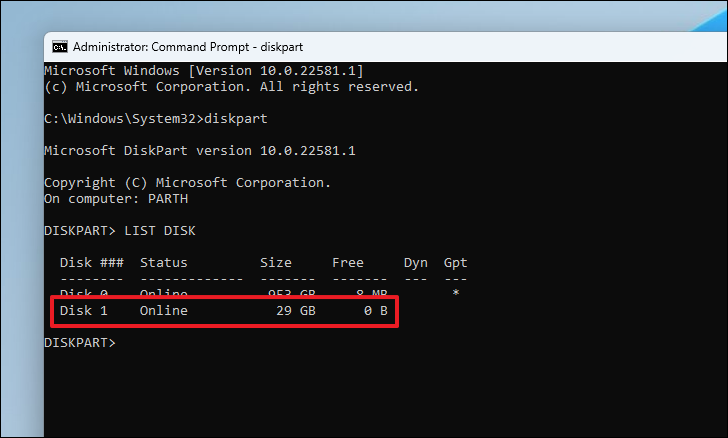
Step 5: Type SELECT DISK X (replace 'X' with the disk number of your USB drive) and press Enter.
SELECT DISK X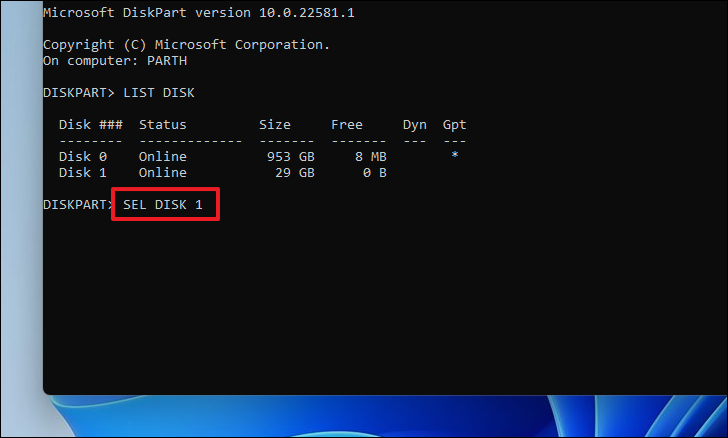
Step 6: Type CLEAN and press Enter to erase all data on the USB drive.
CLEAN
Step 7: Type CREATE PARTITION PRIMARY and press Enter to create a new primary partition.
CREATE PARTITION PRIMARY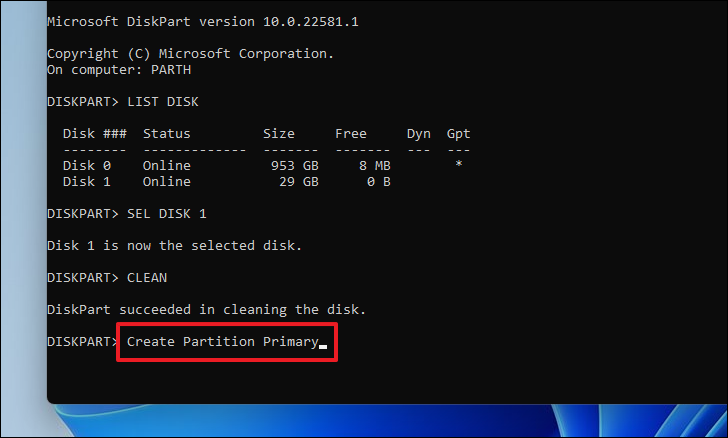
Step 8: Type ACTIVE and press Enter to mark the partition as active.
ACTIVE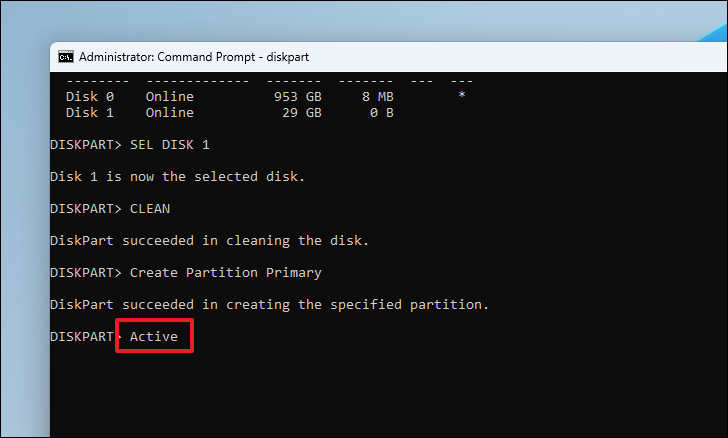
Step 9: Type FORMAT FS=NTFS LABEL="Bootable_USB" QUICK OVERRIDE and press Enter to format the USB drive with the NTFS file system.
FORMAT FS=NTFS LABEL="Bootable_USB" QUICK OVERRIDE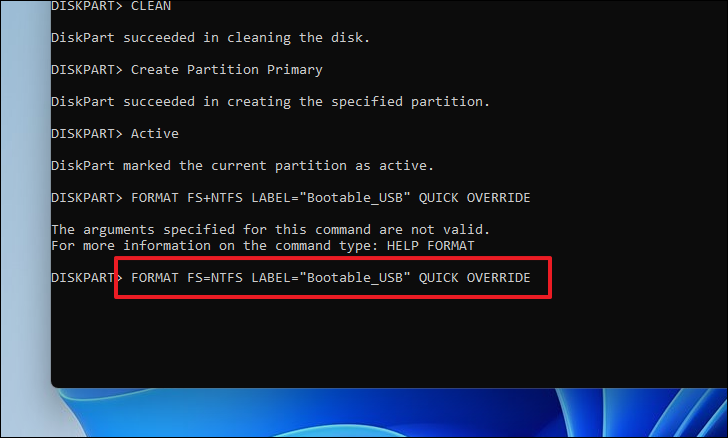
Step 10: Assign a drive letter to the USB drive by typing ASSIGN LETTER=Y (you can choose any available letter) and pressing Enter.
ASSIGN LETTER=Y
Step 11: Type EXIT and press Enter to close DiskPart.
EXIT
Step 12: Mount the Windows 11 ISO file. If you're using Windows 10 or 11, you can right-click the ISO file and select 'Mount'. Alternatively, use the following command in Command Prompt:
PowerShell Mount-DiskImage -ImagePath "C:\path\to\your\windows11.iso"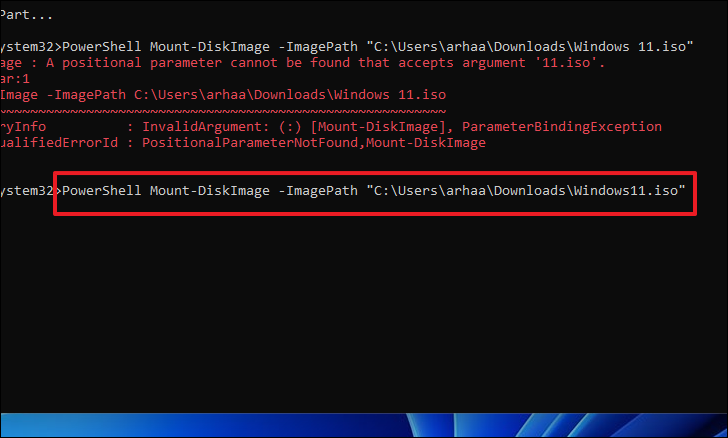
Step 13: Note the drive letter assigned to the mounted ISO file. You can find this in File Explorer or by typing LIST VOLUME in DiskPart.
LIST VOLUME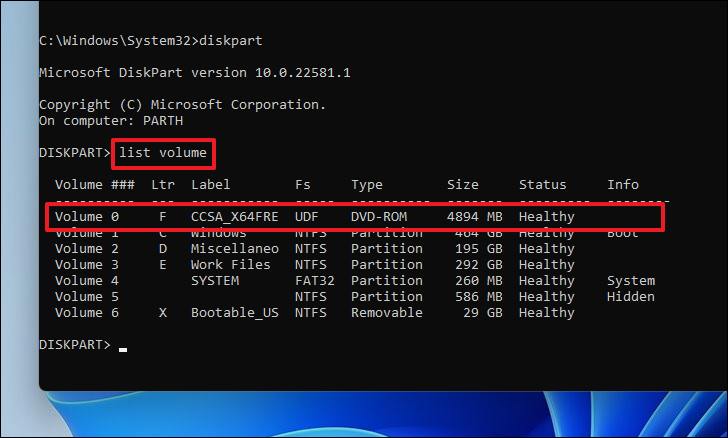
Step 14: Navigate to the boot directory of the mounted ISO by typing X: (replace 'X' with the ISO's drive letter), pressing Enter, then typing cd boot and pressing Enter.
X:
cd boot
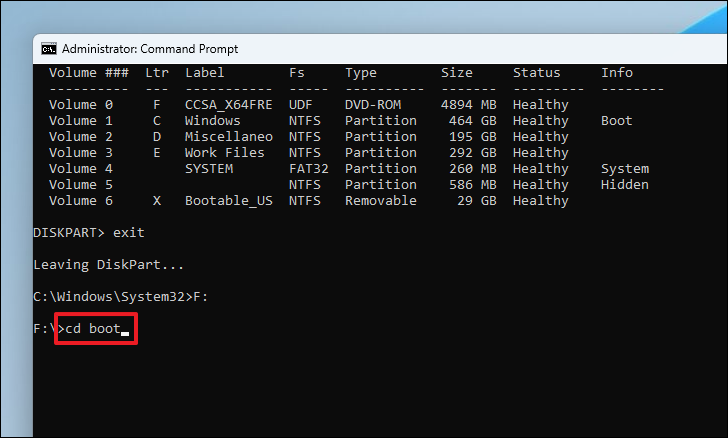
Step 15: Make the USB drive bootable by typing bootsect /nt60 Y: (replace 'Y' with your USB drive letter) and pressing Enter.
bootsect /nt60 Y: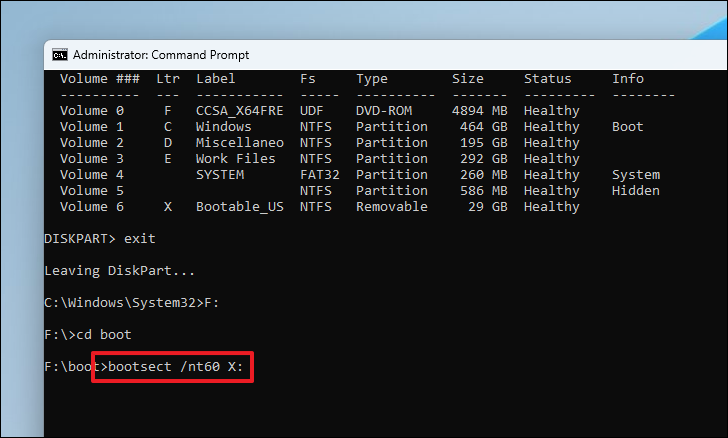
Step 16: Copy all files from the mounted ISO to the USB drive using the following command:
xcopy X:\*.* Y:\ /E /F /HReplace 'X' with the ISO's drive letter and 'Y' with your USB drive letter.
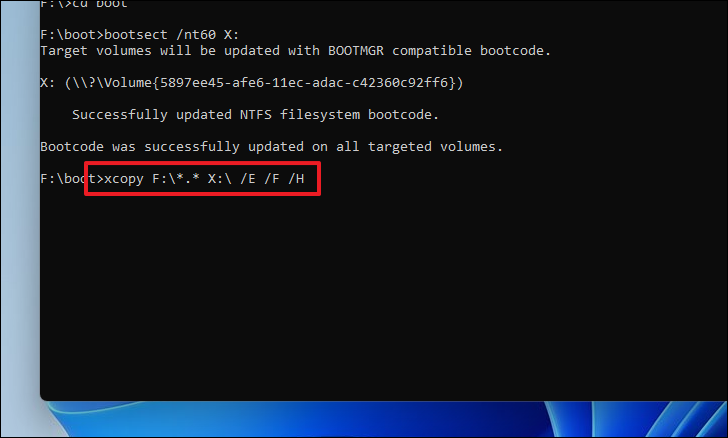
Step 17: Wait for the files to copy. This process may take several minutes. Once completed, you'll see a message indicating that the files have been copied.

Step 18: Your bootable Windows 11 USB drive is now ready. You can use it to install Windows 11 on any compatible computer.

Having a Windows 11 installation media prepared ensures that you're ready for fresh installations or troubleshooting at any time. Whether you choose to use the Media Creation Tool, Rufus, or the Command Prompt method, each approach provides a reliable way to create a bootable Windows 11 media.


